In this post, notes of Unit 2 (Mainstream/ Traditional Theoretical Perspectives ) from DSC– 4 (Perspectives on Public Administration) are given which is helpful for the students doing graduation this year.
Scientific Management Theory (F.W. Taylor)
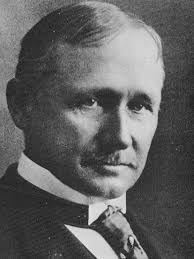
History of Scientific Management Theory
Scientific Management was created by Frederick Winslow Taylor in the late 1800s and early 1900s during the industrial revolution, a time of fast technology growth and mass production. Old management methods could not meet the needs of large factories, causing waste and uneven work results. Taylor noticed these problems while working in factories and suggested that using scientific methods could greatly improve productivity.
basic principles of scientific management theory
- Time and Motion Studies
Taylor started using time-and-motion studies, which meant watching workers closely, timing how long tasks took, and finding the best ways to do them. The aim was to cut out unnecessary movements and find the “best way” to do a job, which could then be taught to all workers.
- Standardizing Work
Taylor thought that once the best way to do a job was found, everyone should do it the same way. This meant creating clear instructions and using the same tools so all workers could be consistent and produce better results.
- Choosing and Training Workers
Another important idea was to choose workers based on their ability for a specific job instead of just assigning anyone to any task. After choosing workers, they would get proper training to learn the best methods, which would help them work better and make fewer mistakes.
Scientific Management Theory’s Effect on Public Administration
The ideas of scientific management changed not just businesses but also how government worked. It brought a focus on being efficient and accountable in government tasks.
Key effects on public administration include:
– Bureaucracy: The use of set rules in government agencies showed Taylor’s influence, leading to more organized and structured government.
– Merit-based hiring: The focus on choosing workers based on skills helped create hiring systems in government jobs that looked at qualifications instead of political ties.
– Measuring Performance: Using time and motion studies led to a focus on checking how well employees were doing their jobs, which improved management in public administration.
Although some criticized Taylor’s ideas for being too rigid and not considering people’s needs, his work helped modernize management practices in both businesses and government.
Ideal-Type Bureaucracy Theory (Max Weber)
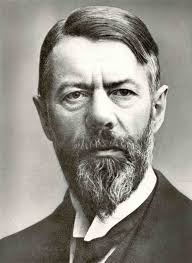
Max Weber, a German sociologist, created the idea of “ideal-type bureaucracy” in the early 1900s as a way to organize large organizations effectively, especially in government. He thought bureaucracy was the best way to manage big operations because it focuses on order, consistency, and responsibility.
Characteristics of Bureaucracy Theory
- Hierarchical Structure
Bureaucracies have a clear structure with different levels of authority. Each level has specific roles and responsibilities, ensuring that decisions come from the top down and that everyone is accountable. Managers oversee workers, and every job has a defined role.
- Rules and Regulations
Bureaucracies follow formal, written rules that guide all activities. These rules help maintain consistency and fairness, as they apply to everyone equally. This prevents random decision-making and creates a standard way to do work.
- Impersonality
In Weber’s ideal bureaucracy, personal feelings and relationships do not affect decisions. This helps ensure that choices are made based on facts and rules, promoting fairness and professionalism.
- Merit-based Advancement
Weber believed that jobs and promotions should be earned based on abilities and performance, not personal connections. This means that employees are hired and promoted for their skills and achievements.
Advantages and Criticisms of Bureaucracy Theory
Advantages Bureaucracy Theory:
– Efficiency: Clear rules and roles help tasks be done quickly and effectively.
– Consistency: Standard rules make decisions predictable, ensuring reliable public services.
– Accountability: A clear chain of command helps clarify responsibilities and improves oversight.
– Professionalism: Hiring based on merit creates a skilled workforce.
Criticisms Bureaucracy Theory :
– Rigidity: Strict rules can make bureaucracies slow to change, leading to problems in fast-moving situations.
– Red Tape: Bureaucracies can become overly complicated, causing delays and making simple tasks harder.
– Impersonality: While objectivity is good, too much impersonality can make organizations unresponsive to individual needs.
– Goal Displacement: Focusing too much on rules may cause bureaucrats to lose sight of the organization’s main goals.
Bureaucracy Theory Relevance to Modern Public Administration
Weber’s ideal-type bureaucracy is still important in today’s public administration, as many government organizations are based on these principles. However, new management ideas now emphasize flexibility and responsiveness, which challenge some traditional bureaucratic features.
– Accountability and rule-based decision-making remain vital for fairness in public administration.
– Merit-based recruitment is still important in civil service systems worldwide.
– Flexibility: Modern public administration aims to combine Weber’s ideas with the need for more adaptability and innovation to meet today’s complex governance challenges.
Despite its criticisms, Weber’s bureaucracy model helps us understand how large organizations work, especially in the public sector. Many public administration reforms build on his ideas while trying to fix the issues he pointed out.
Human Relations Theory (Elton Mayo)
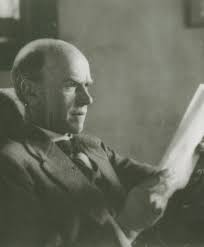
Elton Mayo, an Australian psychologist, is famous for creating the Human Relations Theory in the 1930s. This theory focuses on human behavior, social interactions, and the well-being of employees at work.
Hawthorne Studies
The Hawthorne Studies were done at the Western Electric Hawthorne Works in Chicago from 1924 to 1932. These studies looked at how different work conditions, like lighting and hours, affected how well workers performed. They found surprising results that highlighted the importance of social and mental factors.
Experiments and Findings of Hawthorne Studies:
- Illumination Experiments: The first tests looked at how changes in lighting affected worker productivity. Surprisingly, productivity went up whether the lights were brighter or dimmer. This made researchers rethink how much physical conditions mattered for efficiency.
- Relay Assembly Test Room Experiments: In this phase, groups of workers were monitored while changing work hours, breaks, and rewards. The main finding was that productivity increased not just because of these changes but because workers felt noticed and included by the researchers and supervisors.
- Bank Wiring Observation Room: This experiment studied informal groups and showed that social relationships, peer pressure, and unwritten rules greatly affected how workers behaved and performed.
Findings of the Hawthorne Studies:
– Just being watched (called the “Hawthorne Effect“) made workers more productive, showing that attention to their needs and social environment is important for performance.
– Relationships among workers mattered more than previously believed, and informal group dynamics often influenced productivity more than official rules.
Key Concepts in Human Relations Theory
- Importance of Social Relations
Mayo’s work showed that workers are not just machines but social beings with feelings and relationships. Friendships and interactions at work are important for worker satisfaction and performance. Human Relations Theory shifted focus from just tasks to understanding human behavior in organizations.
- Employee Motivation and Morale
Mayo found that workers are motivated not only by money or work conditions but also by feeling valued, having a sense of belonging, and building good relationships with coworkers. Employee morale is closely tied to productivity, so management should create a supportive and inclusive environment to boost performance.
Impact on Management Practices
Human Relations Theory changed how management viewed worker engagement and teamwork. Some key impacts include:
– Shift to Employee-Centered Management: Management went from treating workers like machines to recognizing their emotional needs and the importance of communication and support. This led to programs for employee engagement and team-building activities.
– Development of Human Resources Management: This theory helped shape modern Human Resources (HR) practices, focusing on training, support, and employee motivation.
– Better Workplace Communication: The importance of open communication between managers and workers became a key management principle, making managers more approachable and encouraging workers to share their thoughts.
– Emphasis on Leadership Styles: The theory also prompted the exploration of leadership styles that value empathy and teamwork, moving away from strict, top-down approaches.
Overall, Mayo’s Human Relations Theory changed how organizations think about worker productivity by highlighting the importance of social factors, well-being, and relationships in the workplace.
Rational Decision-Making Theory (Herbert Simon)
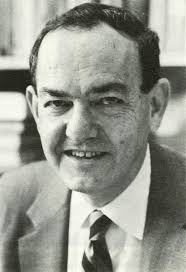
Herbert Simon was an American political scientist and economist known for studying how decisions are made in organizations. He questioned the traditional idea that people make fully informed decisions, suggesting instead the idea of bounded rationality. This concept acknowledges that people have limits in their thinking and face real-life challenges when making choices.
What is Bounded Rationality?
Bounded rationality means that people are not completely rational because they cannot process all information, often lack complete facts, and have limited time. Unlike the traditional model, which assumes people can think through all options and results, Simon believed that people work within a limited scope. This leads them to make decisions that are satisficing—choosing an option that is good enough instead of the best one since they can’t consider every possibility.
Bounded rationality highlights three main limits:
– Cognitive limits: People can’t handle endless information because of mental limits.
– Incomplete information: Decision-makers often don’t have all the details needed for the best choice.
– Time limits: People do not have endless time to look at all possible outcomes.
Decision-Making Process in Rational Decision-Making
Simon suggested that decision-making involves several steps to help people deal with their limited rationality:
- Intelligence Phase
In this first step, the decision-maker finds the problem or need for a decision. They gather information and look for potential issues or chances. Here, they define the problem clearly and understand the situation.
- Design Phase
In this step, possible solutions are created. Decision-makers think of different options to solve the identified problem and consider the effects of each choice while keeping in mind their limits in resources, time, and information.
- Choice Phase
In the last step, the decision-maker picks the best option from those created in the design phase. The choice is made based on evaluating alternatives, often going for a good enough decision rather than the best one, given their limitations. After a decision is made, it is put into action and reviewed later.
Critiques and Contributions
Contributions:
– Realism in Decision-Making Models: Simon’s bounded rationality model shows a more realistic view of how decisions are made, recognizing that people are not always perfectly rational.
– Framework for Complex Decisions: His phases of decision-making help break down complicated decisions into easier steps for managers and policymakers.
– Introduction of Satisficing: Simon introduced the idea of satisficing, showing that people often look for solutions that are “good enough” rather than perfect. This idea is widely accepted in management and economics.
– Interdisciplinary Influence: Simon’s work has impacted many fields, including economics, psychology, management, political science, and artificial intelligence, especially in decision-support systems.
Critiques:
– Overemphasis on Cognitive Limitations: Some critics believe that Simon focuses too much on cognitive limits and underestimates people’s ability to learn and make decisions in uncertain situations.
– Simplistic Framework: The steps of decision-making (intelligence, design, choice) may be too simple and might not always reflect the complexities of decision-making in large organizations.
– Focus on Individual Decision-Making: While Simon’s model looks at individual decision-making, it does not fully capture how group dynamics and social interactions affect decisions.
Overall, Herbert Simon’s work on rational decision-making and the concept of bounded rationality has greatly influenced how we understand decision-making in complex situations. It challenged the traditional view of rationality and provided a more realistic way to study how decisions are made in organizations and everyday life.
Ecological Approach (Fred Riggs)
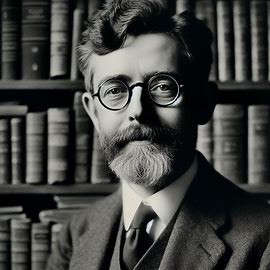
Fred W. Riggs was an important expert in comparing public administration, and his ecological approach helps us understand how public administration works in different settings. He pointed out that administrative systems are greatly affected by the social, economic, cultural, and political conditions (ecology) around them. His work helps analyze how administration interacts with its environment, especially in developing countries.
Concept of Ecology in Administration
The ecological approach sees public administration as part of a larger social system, where factors like the economy, culture, and politics shape how administration works. Riggs believed that the success and features of any administrative system depend on the specific context it is in, influenced by the society it serves.
Key points of the ecological approach include:
– Interdependence: Public administration works with other social systems (political, economic, cultural) and is affected by them.
– Adaptation: Administrative systems must adjust to their surroundings, leading to different structures and processes in various societies.
– Context-Sensitivity: What works well in one place may not work in another due to differences in social, cultural, and economic conditions.
Prismatic Sala Model of Riggs
To explain the complexity of administrative systems in developing societies, Riggs created the Prismatic-Sala Model. This model shows how societies change from traditional structures to modern ones, moving through a phase where both traditional and modern elements exist together.
Characteristics of Prismatic Societies:
- Heterogeneity: These societies have a mix of old and new institutions, which can create confusion. For example, modern laws may exist alongside traditional customs.
- Formalism: There can be a big difference between official rules and how things actually work. A society may have modern systems in place, but they might not be followed properly due to cultural practices.
- Poly-normativism: Different rules may apply to people based on their social, ethnic, or geographic backgrounds, leading to inconsistent administration.
- Overlapping Functions: Organizations in these societies often have many roles because of a lack of specialization. One government department might handle many tasks that would be separate in a more modern society.
Administrative Implications:
– Corruption: The gap between official rules and real practices often leads to corruption, as officials may exploit these gaps for personal gain.
– Inefficiency: The blend of old and new systems can cause delays and mismanagement in administrative processes.
– Dual Accountability: Administrators may face pressure from both formal institutions and informal social networks, making it unclear who they are accountable to.
Ecological Approach Relevance to Comparative Public Administration
Fred Riggs’ ecological approach and Prismatic-Sala Model greatly influence the study of Comparative Public Administration (CPA), which looks at how different administrative systems operate in various contexts. Riggs’ work is important for several reasons:
- Understanding Diversity in Administration: Riggs highlighted that we can’t understand administrative systems without considering their environments. This is especially important for studying developing countries, where outside models may not work due to unique societal conditions.
- Focus on Transitional Societies: Riggs’ model helps explain the difficulties faced by countries moving from traditional to modern systems and why some reforms succeed or fail.
- Framework for Comparative Analysis: His work offers a way to compare public administration systems across different societies, recognizing that what works in one place may not work in another.
- Guidance for Reform: Riggs’ approach is useful for creating administrative reforms in developing countries, emphasizing the need for reforms to fit the specific social, political, and economic conditions of each country.
In summary, Riggs’ ecological approach helps us understand how administrative systems are shaped by their environments and provides helpful insights for studying public administration across different contexts.

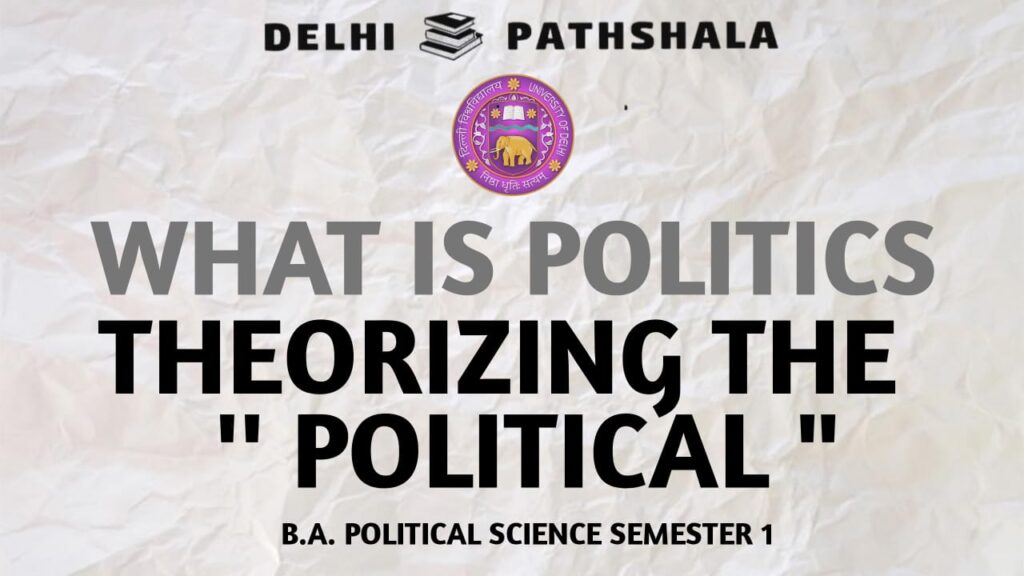

Thanks very much for the literature ,it is really well articulated and clear to understand. I am looking forward for further reading materials